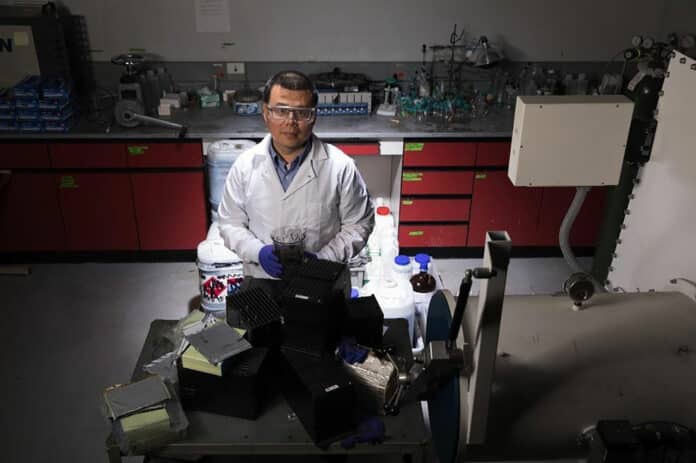With the rapidly increasing demand for energy storage, the lithium-ion battery market continues to expand. However, the traditional battery electrode manufacturing method involves toxic organic solvents and energy-consuming drying/recovering processes. The evaporation of the solvent leads to uneven materials distribution, and the electrodes’ microstructure could impede the fast-charging ability.
Researchers at Worcester Polytechnic Institute (WPI) have developed a solvent-free process to manufacture lithium-ion battery electrodes that are greener, cheaper, and charge faster than electrodes currently on the market. The advance could improve the manufacturing of batteries for electric vehicles.
The new dry-print manufacturing process avoids the toxic solvents and the long drying times needed when manufacturing electrodes with slurries and conventional production methods. Lead researcher Yan Wang said the new process could be scaled up and reduce electrode manufacturing costs by up to 15% while also producing electrodes that can charge faster than conventionally produced electrodes.
“Current lithium-ion batteries charge too slowly, and manufacturers typically use flammable, toxic, and expensive solvents that increase the time and cost of production,” Wang said. “Our solvent-free manufacturing process addresses those disadvantages by producing electrodes that charge to 78% of capacity in 20 minutes, all without the need for solvents, slurries, and long production times.”
Lithium-ion battery electrodes are typically made by mixing active materials, conductive additives, polymers, and organic solvents to create a slurry. That slurry is pasted onto a metal substrate, dried in an oven, and cut into pieces for use in batteries. The solvents are recovered through distillation.
In contrast, the new process involved mixing together dry powders that were electrically charged so they would adhere when sprayed onto a metal substrate. The dry-coated electrodes were then heated and compressed with rollers. The researchers reported skipping the conventional drying and solvent-recovery process cut battery manufacturing energy use by an estimated 47%.
The unique microstructure could also benefit the electrode with better fast-charging ability and longer cycle life. Thus, the team believes this work paves a more efficient and economical way for battery manufacturing with higher-quality electrode products.
Dry electrode technology can be cost-effective as it eliminates the need for solvent and solvent recovery steps and increases energy density. The technology also has the potential to reduce production costs by simplifying the manufacturing process and lowering the facility space requirement. Researchers say these solvent-free manufacturing processes are also compatible with next-generation batteries, especially the solid-state battery (SSB), and have already attracted the focus of the industry.
Journal reference:
- Yangtao Liu, Xiangtao Gong, Chinmoy Podder, Fan Wang, Zeyuan Li, Jianzhao Liu, Jinzhao Fu, Xiaotu Ma, Panawan Vanaphuti, Rui Wang, Andrew Hitt, Yavuz Savsatli, Zhenzhen Yang, Mingyuan Ge, Wah-Keat Lee, Bryan Yonemoto, Ming Tang, Heng Pan, Yan Wang. Roll-to-roll solvent-free manufactured electrodes for fast-charging batteries. Joule, 2023; DOI: 10.1016/j.joule.2023.04.006
